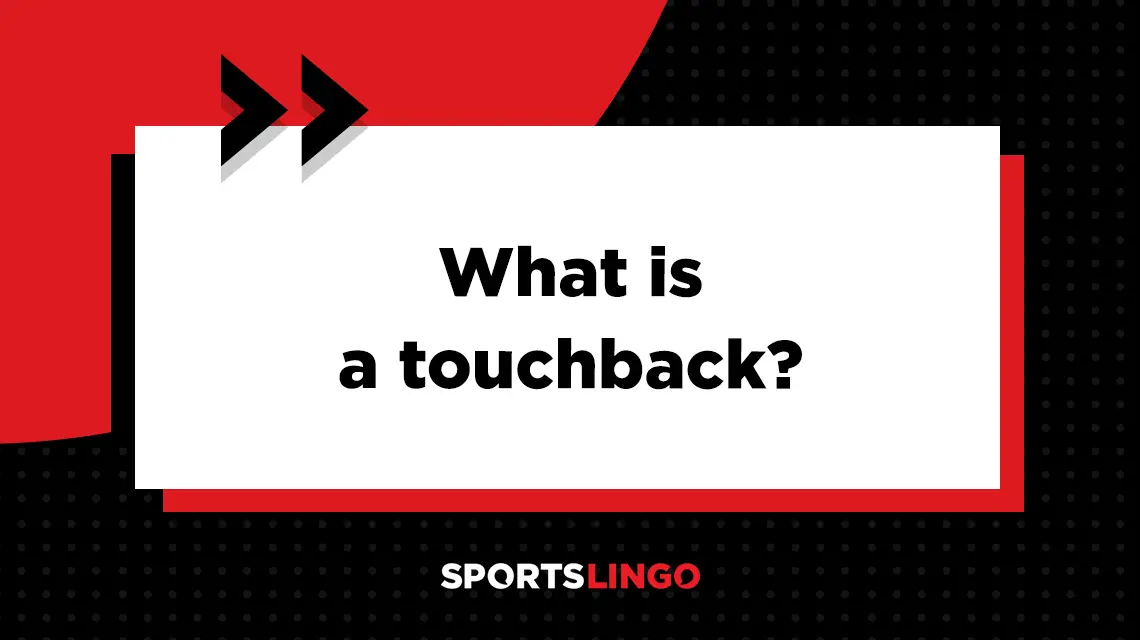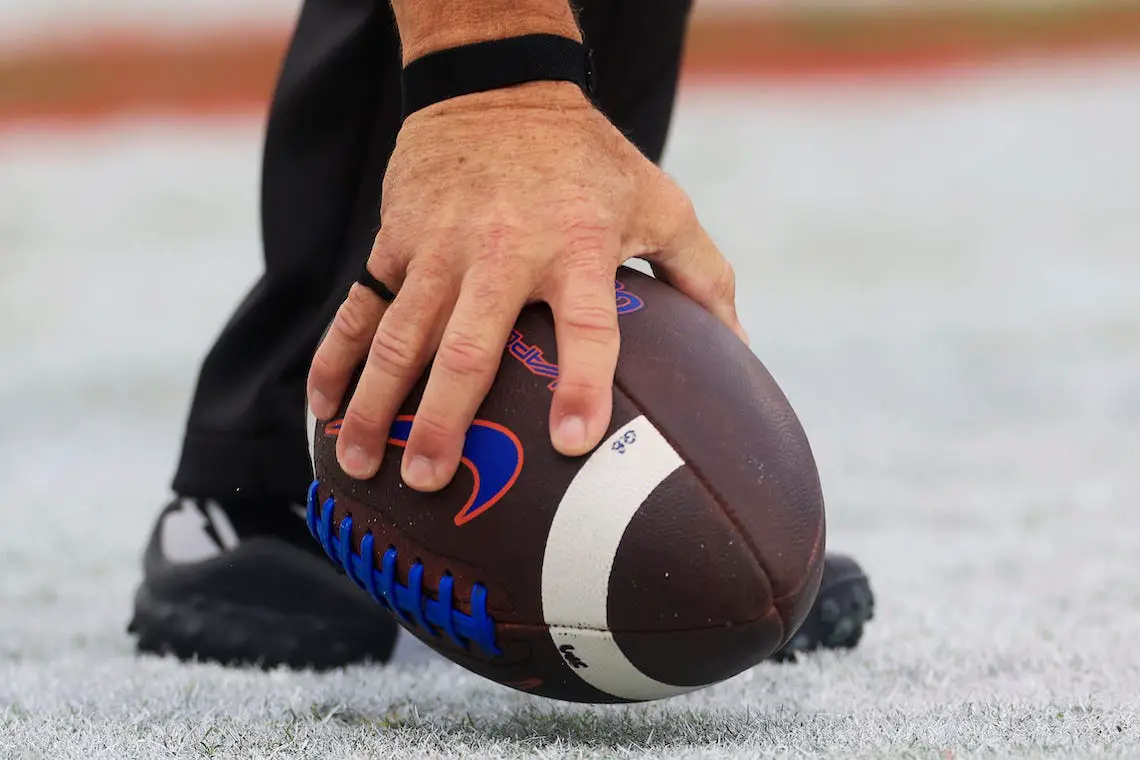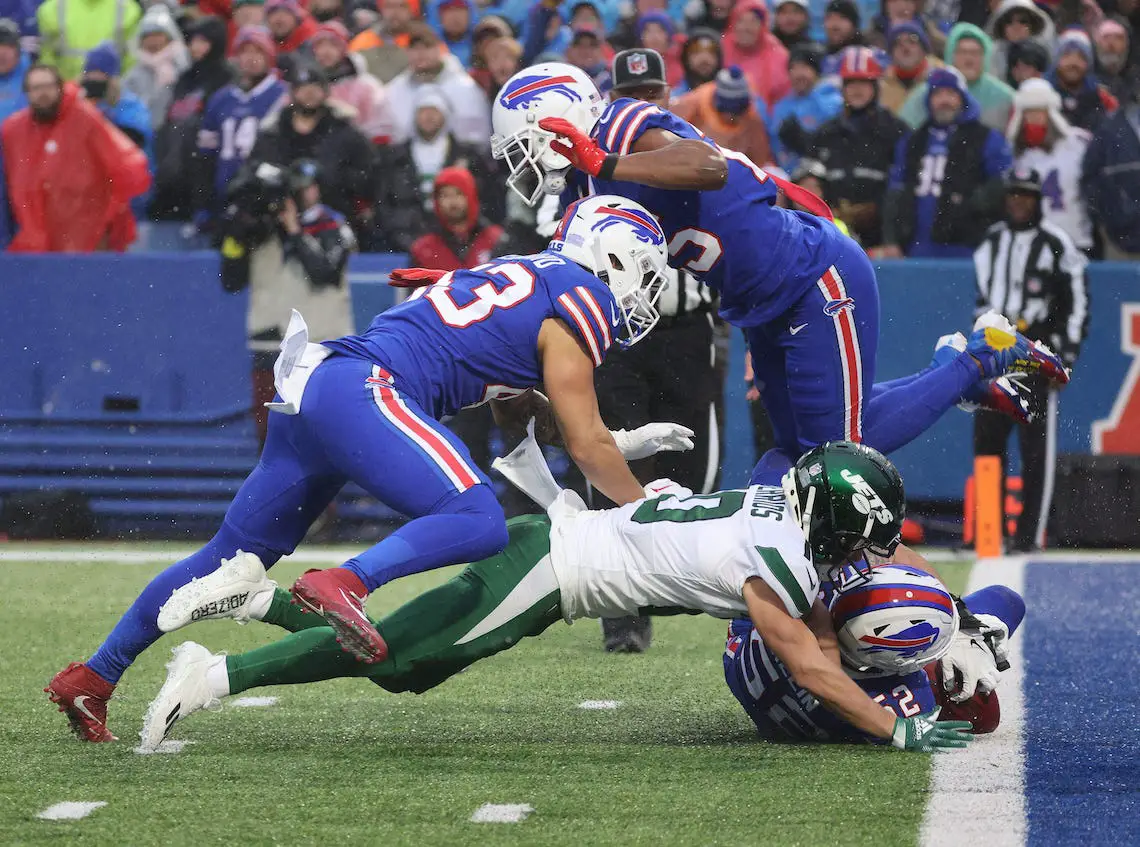
touch*back
What is the definition of touchback in football?
1. Touchback is a term used in American football to describe when a player receives a kickoff or punt from behind their own goal line and then proceeds to down the ball in their end zone, instead of trying to return the ball. The ball must cross over the goal line from a kick from their opponent.
A player cannot receive the ball in their end zone, then cross the goal line in a return attempt, then run back into the end zone in order to get a touchback. If they do run back into the end zone and are tackled by their opponent, they will then be charged with a safety.
What happens in a touchback?
A touchback can occur under these circumstances:
- The receiving player catches the ball in the end zone and drops to one knee.
- The ball touches any part of the end zone.
- The ball touches the end zone and it comes out of the end zone without either of the teams having possession.
- The ball is kicked over the end zone and out of bounds.
Is a touchback at the 20 or 25 yard line?
The result of a touchback on a kickoff is that the receiving team gets the ball at their own 25-yard line. For a punt, they would start on the 20-yard line.
For a missed field goal, the non-kicking team in the NFL gets the ball at the 20-yard line or the place from where the ball was kicked, whichever is farther from the goal line. In college football, they would get the ball the 20-yard line or the line of scrimmage of the play in which the attempt was made, whichever is farther from the goal line.
What is the difference between a touchback and a punt?
A punt is a kick made by the offensive team to get the ball as far downfield as possible.
A touchback is when the ball is downed in the receiving team’s end zone as the result of a punt or kickoff. It results in the receiving team getting possession of the ball at the 20-yard line (for a punt) or 25-yard line (for a kickoff).
What is the difference between a touchback and a safety?
With a touchback, the ball is either downed intentionally in the end zone by the receiving team, or it is an automatic result of the ball touching the end zone or going out of bounds after a punt or kickoff.
A safety occurs when a defensive team gains possession of the ball and then runs into their own end zone and is downed. Because the defensive player willingly entered the end zone, the team that gave up the turnover but then downed the runner acquires a safety.
Are there points for a touchback?
Despite the ball ending up in the end zone on a touchback, there are no points awarded for downing the ball in the end zone on a kick off or punt.
Do you get 2 points for a touchback?
There are no points awarded for a touchback. However, a touchback is sometimes confused with a safety, which results in two points (or on rare occasions, one point) for the opposing team.

Corey Perrine/USA TODAY Sports
What is the purpose of a touchback?
A touchback helps the receiving team avoid a possible turnover or player injuries that might otherwise result from an unnecessary kick return. It also prevents the opposing team from getting a chance to gain a field position advantage.
Is a touchback a good thing?
In most cases, a touchback is a good thing for the receiving team. They get to maintain possession of the ball and set up for a play in which they have more control. At the same time, the chances for a player injury on a kick return are eliminated.
In comparison, attempting to return the ball from their team’s end zone may not allow the receiving team to advance as far down the field or, in the event of a turnover, maintain possession of the ball.
How can you avoid a touchback?
If the kicking team wants to avoid a touchback, they must keep the ball in the field of play on a kickoff or punt.
Other uses of a touchback
“Touchback” is also the name of a film starring Brian Presley, Melanie Lynskey, Kurt Russell, and Christine Lahti and directed by Don Handfield. It centers on the way a high school football game changed the course of a man’s life. The film’s release date was April 13, 2012, and it was distributed by Anchor Bay Entertainment and Bliss Media.
The movie involves the main character, Scott Murphy, getting to relive his experience at the big game that ended his chances of playing college football. Another character, Coach Hand, helps him make a decision about whether to avoid the injury he sustained during the football game, which would undoubtedly have an effect on his circumstances in the present.
Examples of how touchback is used in commentary
1. Hester receives the kickoff deep in his end zone, but will gladly take a knee for the touchback. The Bears will start the second half at their own 25-yard line.
SportsLingo goes the extra-inch with the meaning of touchback
In March of 2016, the NFL announced that if a football player elects to receive a touchback, the ball would be spotted at the 25-yard line instead of the previous 20-yard line. This NFL rule change went into affect during the 2016 NFL season. With this new rule change, the NFL was hoping to cut back on injuries to special teams players who elect to return the kicks instead of kneeling in the end zone, as the number of concussions (and other injuries) on the field had been rising. By moving the spot of the ball to the 25-yard line, this would give the team a good starting point on the field and therefore would hopefully entice players to kneel in the end zone for a touchback.
What are the touchback rules in the NFL?
1. On a kickoff or punt, if the returner catches the ball in the end zone and takes a knee, they are granted a touchback. However during a kickoff, if the ball goes into the end zone and the receiving team does not gain possession, the kicking team can pick up the ball in the end zone and will then be awarded a touchdown. The receiving team must take a knee in the end zone during kickoffs to be granted a touchback.
If the returner takes the ball out past the goal line, they are no longer eligible for a touchback. If the returner tries to retreat back into the end zone and is tackled, then it is a safety.
2. On a kickoff or punt, if the ball is kicked over the end zone or if the ball rolls into the end zone, it is a touchback. If the ball touches the goal posts or the crossbar while in the air, it is a touchback.
3. If a defensive player intercepts the ball in their own end zone and is tackled or takes a knee in the end zone, then that is a touchback. However, the player can’t go past the goal line and then come back into the end zone, otherwise that would be a safety if they are tackled in the end zone.
4. If a ball carrier fumbles the ball in the field of play and the ball goes into their opponent’s end zone and out of bounds, or if the ball is recovered and downed by the defensive team, then the defensive team is awarded a touchback.
5. If a ball carrier fumbles the ball in the field of play and the ball goes into their opponent’s end zone, and is recovered in the end zone, then it is a touchback as long as the defense does not bring the ball past their goal line and out of the end zone.
6. If a blocked punt goes into their opponent’s end zone and then the ball is intentionally batted or hit out of bounds by the defense, then the offense must decline the penalty in order to get the touchback.
What are the touchback rules in college football?
The college football rules for touchbacks are essential the same as the NFL, with one important exception. In college football, any fair catch resulting from a kickoff or free kick between the receiving team’s goal line and the 25-yard line is a touchback.
This rule was implemented by the National Collegiate Athletic Association (NCAA) in 2018. It increased the number of touchbacks from kickoffs in an effort to reduce the risk of player injuries related to kick returns.
Sport the term is used
1. Football
